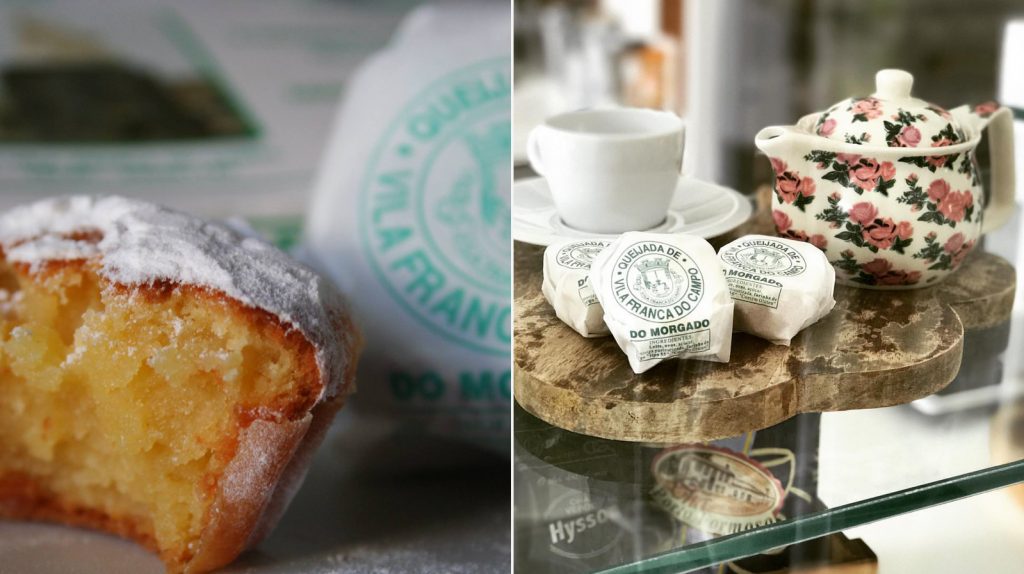Word of Mouth: Eating and Drinking in São Miguel, Azores
Some 900 miles from mainland, volcanic terroir and hyper-local ingredients make for a distinct culinary heritage

Secluded in the middle of the Atlantic, the allure of the Azores has somehow remained under the radar to even the most discerning travelers. As a part of Portugal, Azorean culture certainly feels European, though being 900+ miles from the mainland has allowed a distinct culinary heritage to flourish alongside its myriad natural wonders. The largest of nine islands, São Miguel holds perhaps the most diverse representation of the archipelago’s flavors. Our guide to drinking and dining on São Miguel highlights the greatest hyper-local ingredients and distinctly Azorean specialties, in locations within 30 minutes of the capital, Ponta Delgada.

Cha Gorreana
On the north coast of São Miguel is Europe’s oldest (and only) commercial tea plantation. Introduced by Chinese merchants who passed through the Azores in the early 1880s, tea cultivation flourished in the volcanic soils and the plantation remained. Of two tea-processing factories on the island, Cha Gorreana is the largest, remaining family-owned and operated since 1883. Enjoy a free self-guided tour of the property, including the 19th century Marshalls machinery still churning tea leaves today. Then wander over to the gift shop to sip the organic green and black teas with a side of homemade ice cream.

Louvre Michaelense
At Louvre Michaelense, a café and gift shop in Ponta Delgada, old-world charm is on full display. As its name might suggest, the store originally sold high-end French goods when it opened in 1904, though today’s inventory is exclusively made up of Azorean artisanal goods and edible treats. Discover an elegant display of small-batch fruit preserves, teas and pastries (be sure to ask for the “secret” chocolate cake), along with tchotchkes, books and handicrafts.

Reserva Bar
Don’t let it slip that you’re in Europe, hence the obligation for a night of wine and cheese. The ideal place to indulge is Reserva Bar, tucked away on a hard-to-find street in downtown Ponta Delgada. The contemporary dining room is intimate with just a handful of tables, dim lighting and Portuguese tunes. Linger over tapas of paté and local chouriço sausage, and bottles of Azorean wine grown in the volcanic terroir, such as Frei Gigante Branco and Ferias Vineyards white.

Terra Nostra Garden
Nestled among the spewing geysers and steaming fumaroles of the Furnas Valley, the 30-acre Terra Nostra Botanical Garden is a manicured oasis within the raw landscape. That’s not to say that locals don’t recruit Mother Nature to help with meal-cooking, especially for cozido, Furnas’ iconic dish. The Terra Nostra Garden Hotel is famous for their cozido stew of root veggies, hardy greens and nose-to-tail meat, which is buried in the earth and steamed by the hot springs for over six hours. After your meal, migrate to the sulphur waters in the nearby garden pool for a therapeutic, digestion-aiding swim.

Arruda Pineapple Plantation
Based in Faja de Baixo, the Arruda Pineapple Plantation is devoted to growing pineapples, the Azores’ signature fruit. Introduced after its famous orange groves were decimated by blight, the Azorean pineapple is cultivated to be smaller, less sweet, and more peppery than better-known varieties. Visit the plantation for a comprehensive review of pineapple production, from germination trays to sprouting chambers, ending at the greenhouses that mimic the tropical conditions in which pineapples thrive. Take home treats like pineapple liqueur, chutney, and divine pineapple mustard from the gift shop.

Ponta do Garajau
Drive to the quaint south-coast village of Ribeira Quente for a meal at Ponta do Garajau, one of the finest restaurants on São Miguel. The retro gas-lamps and fishnets that adorn the walls set the mood for enjoying locally caught seafood on casual picnic tables in the patio. Start with a round of smaller, ultra-local dishes, like crunchy chicharros (whole fried tiny mackerel), tomato garlic shrimp, cracas (gooseneck barnacles), and sizzling lapas (orange mollusks with garlic sauce). For your main dish, ask for the freshest fish of the day prepared as recommended by the chef—a go-to order that will never disappoint.

Queijadas da Vila
In Vila Franca do Campo, the historic capital of São Miguel, the signature baked treats served at Queijadas da Vila are essential. Queijadas are palm-sized custard cakes that date back to the 16th century. They were created by nuns who sought to utilize an excess of egg yolks, which resulted from reserving egg whites to starch clothing. Eduíno Morgado Medeiros’ adapted recipe has become the gold standard for queijadas on São Miguel. Just one bite will have your lap covered with dense crumbs and a quick-forming mustache of powdered sugar.












